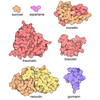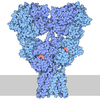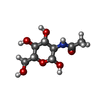+ データを開く
データを開く
- 基本情報
基本情報
| 登録情報 | データベース: PDB / ID: 9nou | ||||||
|---|---|---|---|---|---|---|---|
| タイトル | Human sweet taste receptor (TAS1R2 + TAS1R3) VFT domains from the combined datasets | ||||||
 要素 要素 |
| ||||||
 キーワード キーワード | MEMBRANE PROTEIN / Sweet / taste / receptor / GPCR / TAS1R2 / TAS1R3 / T1R2 / T1R3 | ||||||
| 機能・相同性 |  機能・相同性情報 機能・相同性情報sweet taste receptor complex / detection of chemical stimulus involved in sensory perception of sweet taste / sweet taste receptor activity / taste receptor activity / sensory perception of umami taste / sensory perception of sweet taste / Class C/3 (Metabotropic glutamate/pheromone receptors) / positive regulation of cytokinesis / G protein-coupled receptor activity / Sensory perception of sweet, bitter, and umami (glutamate) taste ...sweet taste receptor complex / detection of chemical stimulus involved in sensory perception of sweet taste / sweet taste receptor activity / taste receptor activity / sensory perception of umami taste / sensory perception of sweet taste / Class C/3 (Metabotropic glutamate/pheromone receptors) / positive regulation of cytokinesis / G protein-coupled receptor activity / Sensory perception of sweet, bitter, and umami (glutamate) taste / G alpha (i) signalling events / receptor complex / G protein-coupled receptor signaling pathway / Golgi apparatus / membrane / plasma membrane 類似検索 - 分子機能 | ||||||
| 生物種 |  Homo sapiens (ヒト) Homo sapiens (ヒト) | ||||||
| 手法 | 電子顕微鏡法 / 単粒子再構成法 / クライオ電子顕微鏡法 / 解像度: 2.8 Å | ||||||
 データ登録者 データ登録者 | Juen, Z. / Lu, Z. / Yu, R. / Chang, A.N. / Wang, B. / Fitzpatrick, A.W.P. / Zuker, C.S. | ||||||
| 資金援助 |  米国, 1件 米国, 1件
| ||||||
 引用 引用 |  ジャーナル: Cell / 年: 2025 ジャーナル: Cell / 年: 2025タイトル: The structure of human sweetness. 著者: Zhang Juen / Zhengyuan Lu / Ruihuan Yu / Andrew N Chang / Brian Wang / Anthony W P Fitzpatrick / Charles S Zuker /  要旨: In humans, the detection and ultimately the perception of sweetness begin in the oral cavity, where taste receptor cells (TRCs) dedicated to sweet-sensing interact with sugars, artificial sweeteners, ...In humans, the detection and ultimately the perception of sweetness begin in the oral cavity, where taste receptor cells (TRCs) dedicated to sweet-sensing interact with sugars, artificial sweeteners, and other sweet-tasting chemicals. Human sweet TRCs express on their cell surface a sweet receptor that initiates the cascade of signaling events responsible for our strong attraction to sweet stimuli. Here, we describe the cryo-electron microscopy (cryo-EM) structure of the human sweet receptor bound to two of the most widely used artificial sweeteners-sucralose and aspartame. Our results reveal the structural basis for sweet detection, provide insights into how a single receptor mediates all our responses to such a wide range of sweet-tasting compounds, and open up unique possibilities for designing a generation of taste modulators informed by the structure of the human receptor. | ||||||
| 履歴 |
|
- 構造の表示
構造の表示
| 構造ビューア | 分子:  Molmil Molmil Jmol/JSmol Jmol/JSmol |
|---|
- ダウンロードとリンク
ダウンロードとリンク
- ダウンロード
ダウンロード
| PDBx/mmCIF形式 |  9nou.cif.gz 9nou.cif.gz | 203.5 KB | 表示 |  PDBx/mmCIF形式 PDBx/mmCIF形式 |
|---|---|---|---|---|
| PDB形式 |  pdb9nou.ent.gz pdb9nou.ent.gz | 157.6 KB | 表示 |  PDB形式 PDB形式 |
| PDBx/mmJSON形式 |  9nou.json.gz 9nou.json.gz | ツリー表示 |  PDBx/mmJSON形式 PDBx/mmJSON形式 | |
| その他 |  その他のダウンロード その他のダウンロード |
-検証レポート
| 文書・要旨 |  9nou_validation.pdf.gz 9nou_validation.pdf.gz | 1.4 MB | 表示 |  wwPDB検証レポート wwPDB検証レポート |
|---|---|---|---|---|
| 文書・詳細版 |  9nou_full_validation.pdf.gz 9nou_full_validation.pdf.gz | 1.4 MB | 表示 | |
| XML形式データ |  9nou_validation.xml.gz 9nou_validation.xml.gz | 42.3 KB | 表示 | |
| CIF形式データ |  9nou_validation.cif.gz 9nou_validation.cif.gz | 59.8 KB | 表示 | |
| アーカイブディレクトリ |  https://data.pdbj.org/pub/pdb/validation_reports/no/9nou https://data.pdbj.org/pub/pdb/validation_reports/no/9nou ftp://data.pdbj.org/pub/pdb/validation_reports/no/9nou ftp://data.pdbj.org/pub/pdb/validation_reports/no/9nou | HTTPS FTP |
-関連構造データ
| 関連構造データ |  49617MC 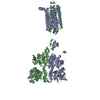 9norC 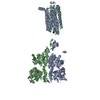 9nosC  9notC  9novC 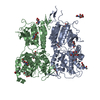 9nowC 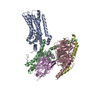 9noxC 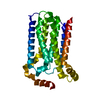 9noyC 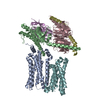 9o38C M: このデータのモデリングに利用したマップデータ C: 同じ文献を引用 ( |
|---|---|
| 類似構造データ | 類似検索 - 機能・相同性  F&H 検索 F&H 検索 |
- リンク
リンク
- 集合体
集合体
| 登録構造単位 | 
|
|---|---|
| 1 |
|
- 要素
要素
| #1: タンパク質 | 分子量: 58379.551 Da / 分子数: 1 / 由来タイプ: 組換発現 / 由来: (組換発現)  Homo sapiens (ヒト) / 遺伝子: TAS1R3, T1R3, TR3 / 発現宿主: Homo sapiens (ヒト) / 遺伝子: TAS1R3, T1R3, TR3 / 発現宿主:  Homo sapiens (ヒト) / 参照: UniProt: Q7RTX0 Homo sapiens (ヒト) / 参照: UniProt: Q7RTX0 | ||||
|---|---|---|---|---|---|
| #2: タンパク質 | 分子量: 59725.098 Da / 分子数: 1 / 由来タイプ: 組換発現 / 由来: (組換発現)  Homo sapiens (ヒト) / 遺伝子: TAS1R2, GPR71, T1R2, TR2 / 発現宿主: Homo sapiens (ヒト) / 遺伝子: TAS1R2, GPR71, T1R2, TR2 / 発現宿主:  Homo sapiens (ヒト) / 参照: UniProt: Q8TE23 Homo sapiens (ヒト) / 参照: UniProt: Q8TE23 | ||||
| #3: 糖 | ChemComp-NAG / 研究の焦点であるリガンドがあるか | N | Has protein modification | Y | |
-実験情報
-実験
| 実験 | 手法: 電子顕微鏡法 |
|---|---|
| EM実験 | 試料の集合状態: PARTICLE / 3次元再構成法: 単粒子再構成法 |
- 試料調製
試料調製
| 構成要素 | 名称: Human sweet taste receptor (TAS1R2 + TAS1R3) VFT domains タイプ: COMPLEX / Entity ID: #1-#2 / 由来: RECOMBINANT |
|---|---|
| 由来(天然) | 生物種:  Homo sapiens (ヒト) Homo sapiens (ヒト) |
| 由来(組換発現) | 生物種:  Homo sapiens (ヒト) Homo sapiens (ヒト) |
| 緩衝液 | pH: 7.5 |
| 試料 | 包埋: NO / シャドウイング: NO / 染色: NO / 凍結: YES |
| 急速凍結 | 凍結剤: ETHANE |
- 電子顕微鏡撮影
電子顕微鏡撮影
| 実験機器 | 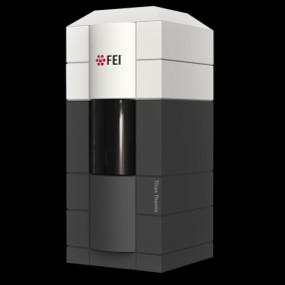 モデル: Titan Krios / 画像提供: FEI Company |
|---|---|
| 顕微鏡 | モデル: TFS KRIOS |
| 電子銃 | 電子線源:  FIELD EMISSION GUN / 加速電圧: 300 kV / 照射モード: FLOOD BEAM FIELD EMISSION GUN / 加速電圧: 300 kV / 照射モード: FLOOD BEAM |
| 電子レンズ | モード: BRIGHT FIELD / 最大 デフォーカス(公称値): 2000 nm / 最小 デフォーカス(公称値): 1200 nm |
| 撮影 | 電子線照射量: 59 e/Å2 フィルム・検出器のモデル: GATAN K3 BIOQUANTUM (6k x 4k) |
- 解析
解析
| EMソフトウェア | 名称: PHENIX / カテゴリ: モデル精密化 | ||||||||||||||||||||||||
|---|---|---|---|---|---|---|---|---|---|---|---|---|---|---|---|---|---|---|---|---|---|---|---|---|---|
| CTF補正 | タイプ: NONE | ||||||||||||||||||||||||
| 3次元再構成 | 解像度: 2.8 Å / 解像度の算出法: FSC 0.143 CUT-OFF / 粒子像の数: 776095 / 対称性のタイプ: POINT | ||||||||||||||||||||||||
| 精密化 | 最高解像度: 2.8 Å 立体化学のターゲット値: REAL-SPACE (WEIGHTED MAP SUM AT ATOM CENTERS) | ||||||||||||||||||||||||
| 拘束条件 |
|
 ムービー
ムービー コントローラー
コントローラー





















 PDBj
PDBj